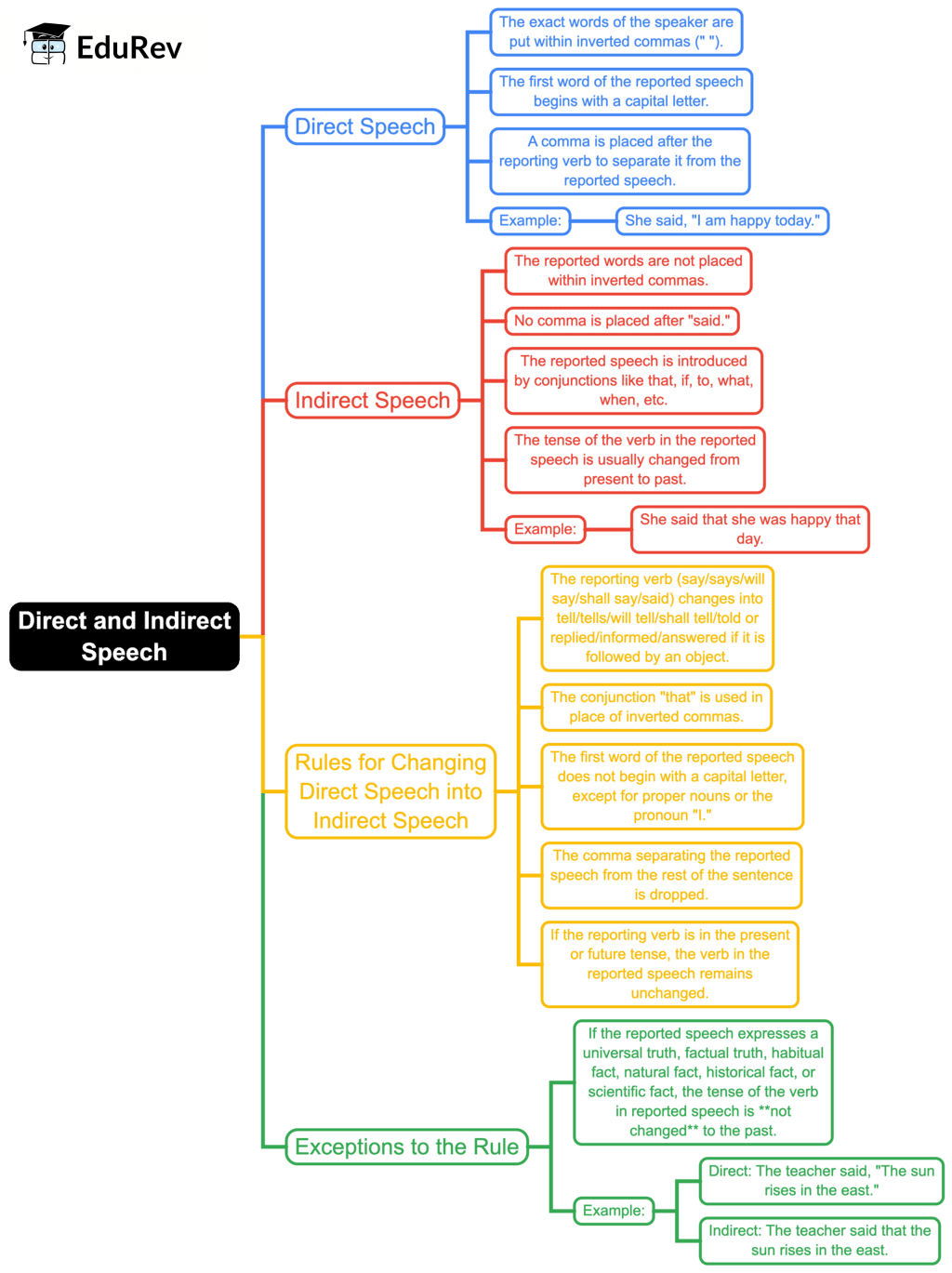Class 7 Exam > Class 7 Notes > English Grammar Class 7 > Mind Map: The Direct & Indirect Speech
Mind Map: The Direct & Indirect Speech | English Grammar Class 7 PDF Download

The document Mind Map: The Direct & Indirect Speech | English Grammar Class 7 is a part of the Class 7 Course English Grammar Class 7.
All you need of Class 7 at this link: Class 7
|
39 videos|288 docs|61 tests
|
FAQs on Mind Map: The Direct & Indirect Speech - English Grammar Class 7
| 1. What is the difference between direct and indirect speech? |  |
Ans. Direct speech refers to quoting the exact words spoken by a person, usually enclosed in quotation marks. For example, she said, "I am going to the market." In contrast, indirect speech reports what someone has said without quoting their exact words, often using phrases like "said that" or "told that." For example, she said that she was going to the market.
| 2. How do we change tenses when converting from direct to indirect speech? |  |
Ans. When converting from direct to indirect speech, the tense usually shifts back one step. For instance, present simple changes to past simple (e.g., "He says, 'I like ice cream'" becomes "He said that he liked ice cream"). However, there are exceptions, such as when the reporting verb is in the present tense or when expressing general truths.
| 3. Are there any punctuation changes when converting from direct to indirect speech? |  |
Ans. Yes, when changing from direct to indirect speech, we remove the quotation marks and often change the punctuation. For example, direct speech "She exclaimed, 'What a beautiful day!'" becomes indirect speech "She exclaimed that it was a beautiful day." The exclamation mark is removed, and the sentence structure is adjusted accordingly.
| 4. What are some common reporting verbs used in indirect speech? |  |
Ans. Common reporting verbs used in indirect speech include "said," "told," "asked," "explained," and "warned." Each verb may require a specific structure; for example, "told" is often followed by an object (e.g., "He told me that..."), while "asked" typically introduces a question (e.g., "He asked if...").
| 5. How do we convert questions from direct to indirect speech? |  |
Ans. To convert questions from direct to indirect speech, we often change the structure from interrogative to declarative. We remove the question marks and use the appropriate reporting verb. For example, "He asked, 'Are you coming?'" becomes "He asked if I was coming." The subject and verb order also change to fit the statement format.
Related Searches
















